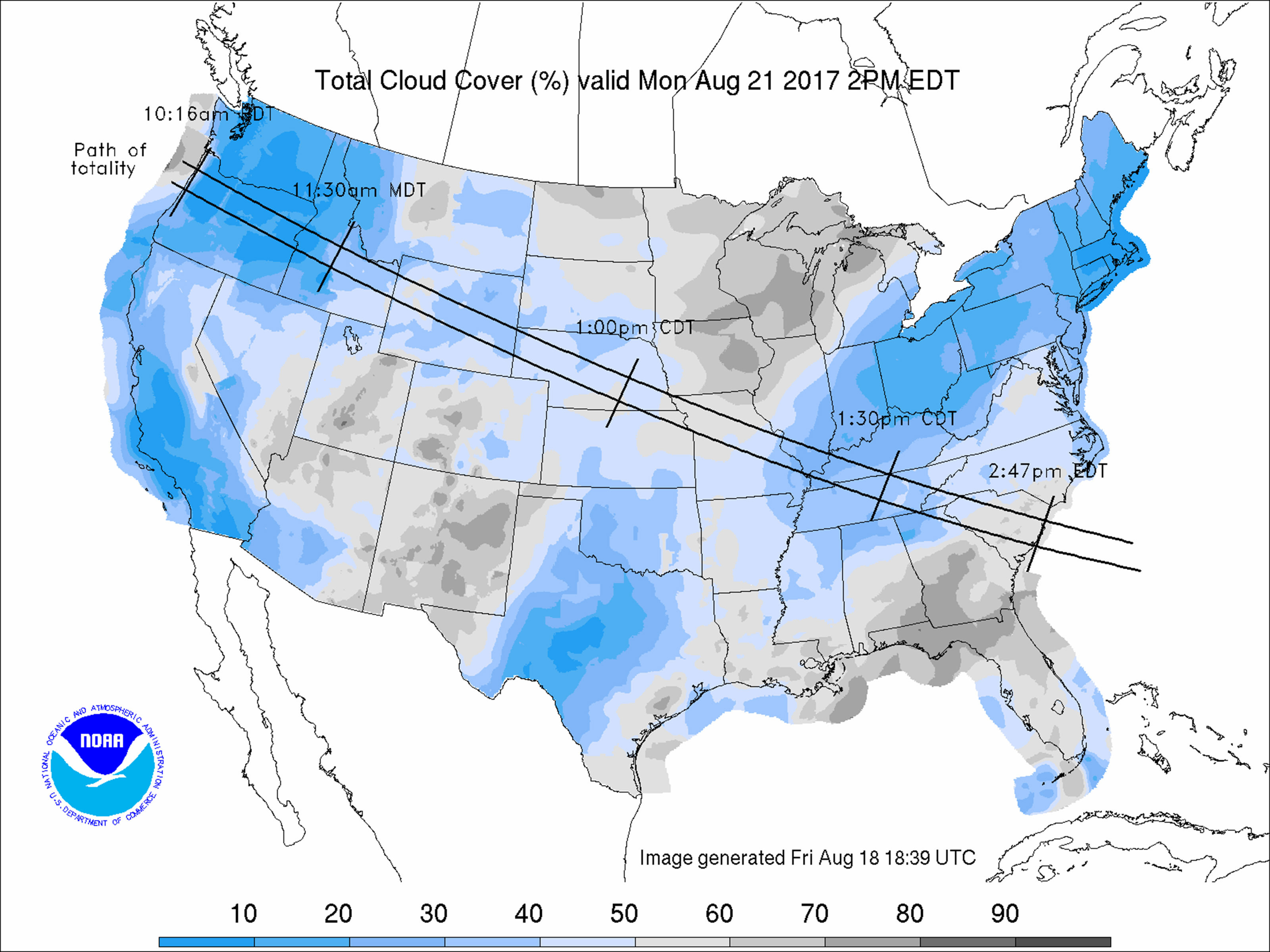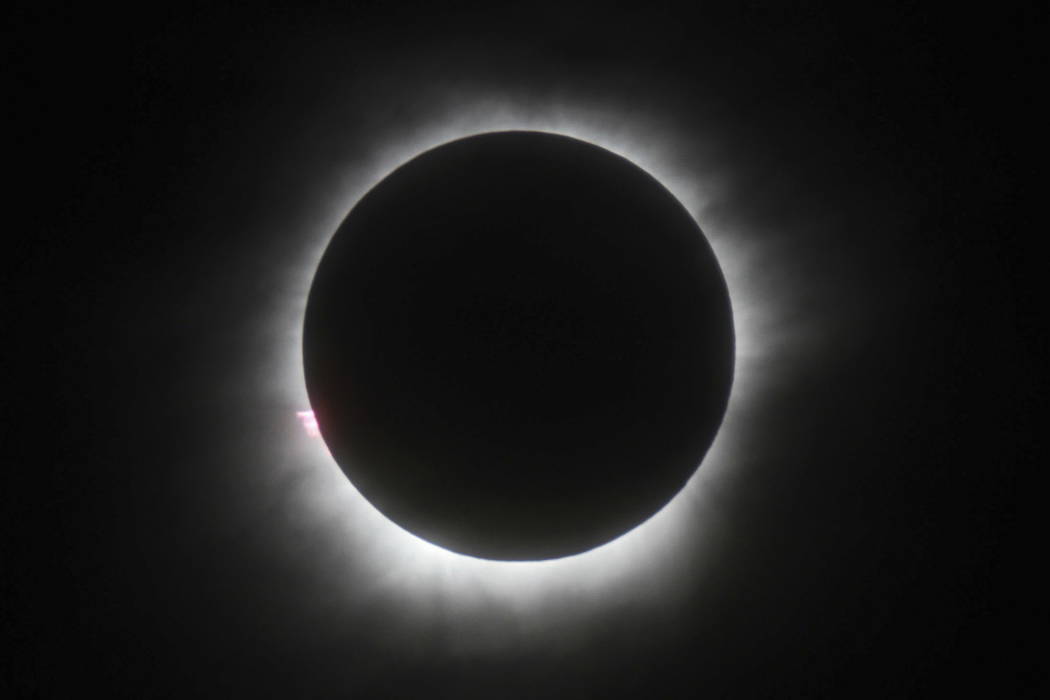Solar eclipse could affect temperatures, solar power in U.S.
Getting ready to watch the solar eclipse? Bring a sweater along with those special glasses because the mercury could dip as the moon’s shadow crosses the land.
Millions of Americans across a 70-mile-wide (113-kilometer) corridor from Oregon to South Carolina will see the sky darken as the sun disappears from view, albeit for only a few minutes at a time.
Temperatures in those areas could tumble by as much as 10 degrees Fahrenheit (5.6 Celsius), according to Paul Walker, a meteorologist with AccuWeather Inc. in State College, Pennsylvania. Other parts of the nation will only experience a partial eclipse.
“That is assuming a totally sunny sky,” Walker said by telephone. “We will see a temperature drop where totality happens,” he said, referring to the path the eclipse will take across the U.S. where the sun will be completely blocked out.
The eclipse will disrupt the sun’s power to heat the ground, warm the atmosphere and supply electricity. It could also be ruined by a rainy day, patch of fog or even just a sudden thunderstorm in the wrong place. Given the limits of modern-day forecasting, predicting any one of those days in advance for an event that only lasts minutes is near impossible.
“It’s a difficult forecast challenge,” said Bob Henson, a meteorologist at Weather Underground in Boulder, Colorado. “You’re not forecasting a day’s weather, but for two minutes.”
The chill in the air will peak about five to 20 minutes after the moon’s shadow passes by. Temperatures could take three hours to rebound across the Great Plains and East Coast, said Brad Harvey, meteorologist with MDA Weather Services in Gaithersburg, Maryland.
“The change in temperature may be larger and take longer to recover in the West,” Harvey said. The eclipse will start to be seen in the morning which is “the time of day when temperatures are rising most rapidly.”
On the West Coast, the eclipse is due to start a little after 9 a.m. local time and peak about 10:15 a.m. In the central U.S., that will happen at 1:18 p.m. in St. Louis. The East Coast will see the biggest effect after 2:30 p.m.
As many as 12,000 megawatts of solar power will vanish along the path of the moon’s shadow along with the decrease in temperatures. Natural gas generators as well as hydroelectric plants and other sources will help fill in the gaps.
There will be little impact on winds, according to Harvey. “Gusts may be reduced because of stabilization of the air,” he said. The effect could be similar to a sea breeze, said Henson.
One of the odd things that could happen on a micro-scale is for fog to occur as sunshine fades and temperatures drop.
That the path of totality crosses three distinct weather zones also has to be factored in by meteorologists.

One is the Pacific Northwest, which is often clear and sunny at this time of year, except along the coast, Henson said. So people living inland will likely have a good chance of seeing the eclipse.
Smoke from wildfires could threaten to obscure the celestial event, said Frank Pereira, a forecaster at the U.S. Weather Prediction Center in College Park, Maryland. “In terms of cloud cover, it will be minimal across a good portion of that area.”
Showers and thunderstorms forecast to cross the region from Nebraska to Missouri Sunday night could linger into Monday, Pereira said. Southern Illinois, Kentucky and Tennessee should all have good weather.
Finally, east of the Mississippi, the typical summertime pattern can be one of afternoon thunderstorms that are difficult to forecast in advance and could make viewing the eclipse that much harder.
“If they pop up over you, you aren’t going to see it,” Henson said.
And it that happens? Well, North America gets another crack at a total solar eclipse in April 2024.






















